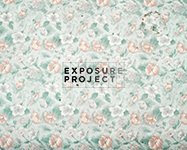
This image by Robert Adams has always had an enormous influence on my thoughts about image-making. It represents one of the most fluid examples of the balance between formal beauty and conceptual strength. Its aesthetic beauty is only further reinforced by the loneliness and isolation that the image exudes. Adams has literally confined his subject within a suburban prison of sterility and impersonality. The woman's silhouette only further emphasizes the image's anonymity, which has already been established in the generic and unsensational suburban landscape.
Today in Nick Nixon's class, he brought in a number of prints from his personal collection. This image was among them. The print couldn't have been more than 6 x 6 inches and was simply matted and framed. Needless to say, it was exquisitely beautiful and perfectly printed. There is something about seeing the real thing, having that physical proximity to a work of art that entirely changes its impact. I literally stood over it for a good 10 to 15 minutes examining every inch of the image, I was transfixed. This photograph was one of the primary inspirations behind my desire to photograph, so seeing it in tangible form was a real treat.
Colorado Springs, Colorado 1968
Image © Robert Adams









































